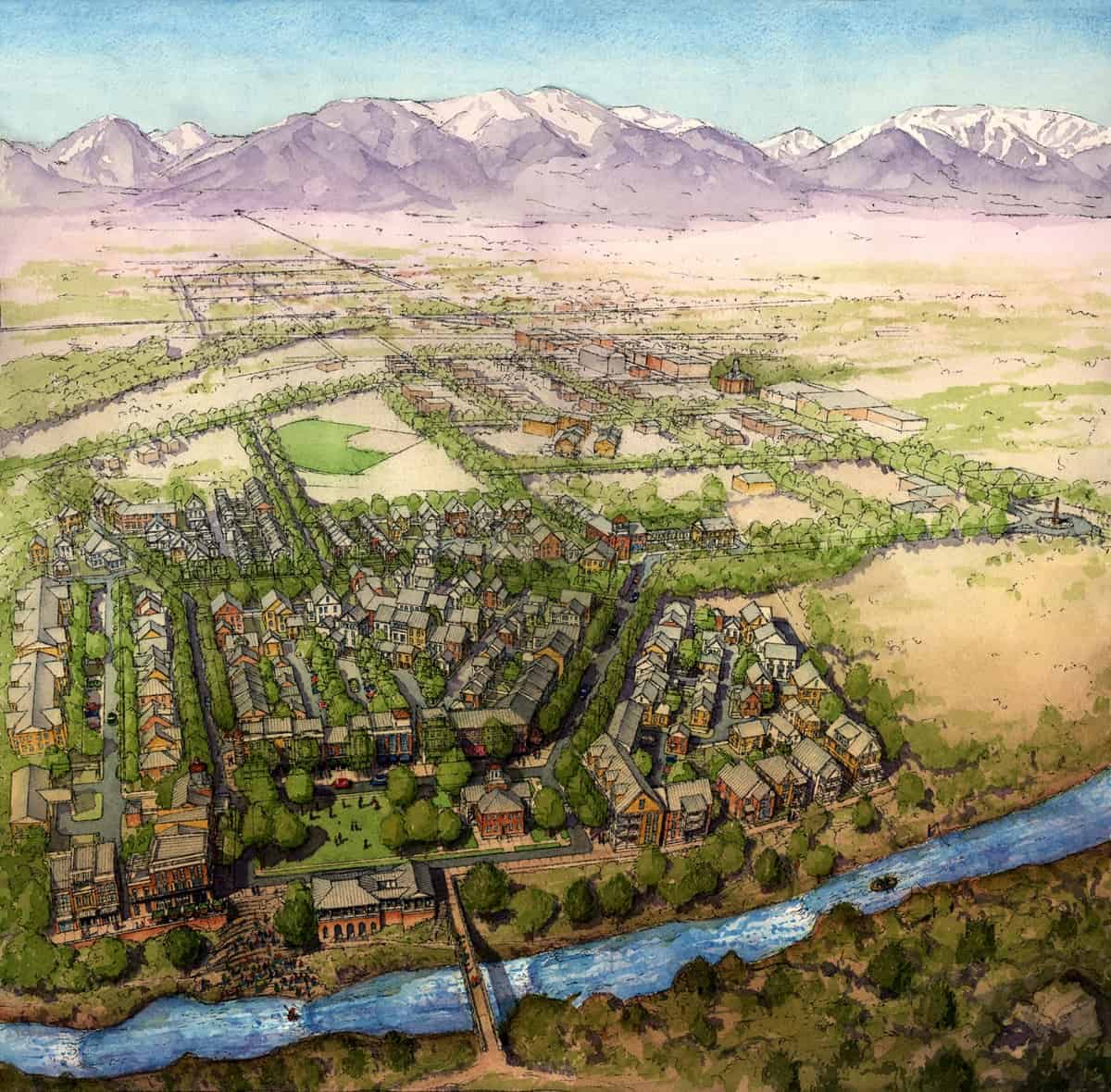
Somewhere east of Eugene and west of Chicago, you can find a particularly wonderful part of the West, now, in a particularly glorious season. You can find this country wherever there are elk and aspen- from somewhere in New Mexico all the way to the border with Canada and beyond. As the days start getting shorter, the cries of bull elk break the chill, and aspen start to turn golden and orange.
That’s when my family usually takes vacation. This year, we ranged from the Sangre de Cristos to the Absarokas; other years, it has been from the Carson NF to the Colville NF. This post is a glimpse into the world you would see if you visited what I’ll call Elk Country. Elk Country may overlap with what Joel Garreau
called “The Empty Quarter” in his 1981 book “The Nine Nations of North America.”
This year you’ll see the yellow of willow, the gold of aspen, the orange of newly dead lodgepole, the red of last year’s dead trees and the gray of dead trees from years past. RV’s are sprinkled generously across the landscape, including clusters in hunting camps, and a variety of other campers. Many have ATV trailers and many have stock trailers. Hunters in camouflage are hiking, riding and ATV-ing. One of my colleagues at work calls this his annual “spiritual retreat” and certainly it is a special time for hunters to connect with each other and with Nature. Since school has started, mostly people you meet are of the gray- headed persuasion. O the weekends, children are out too. Reservoirs are down; lodges are closed for the season. Boats are few.
Cows, some round with pregnancy, and calves are being driven home after a summer in the high country. Cars and trucks gently nudge their way through herds ambling down roads, cowboys talking on cellphones as they push the cattle along.
The late firewood cutters make their last hauls of the season- trucks and trailers looking suspiciously overloaded.
A few fall thoughts. Elk Country has much of the same traditional cultural heritage. Elk Country is composed of pieces of many states in the Intermountain West. It is usually less populated than other parts of the state, and so has less political influence in the state capitols. Similarly, parts of five Forest Service regions are in Elk Country, so Elk Country can’t speak with one cohesive voice in the Forest Service.
Elk Country has many dead trees now, and more in the future, if predictions about climate change are accurate. People worry about the threat of fire to communities and water supplies, about the economy and jobs, and also have a resilience that comes from a heritage of using the land for provision of food and fuel. If you are going to be eating local food in this country, then elk and cattle are likely to be part of the diet.
What makes many Elk Country communities special, in comparison to the rest of the country, is that the public lands are so important to their economies. For example, 95% of Mineral County, Colorado is in public ownership.
Of course, Elk Country is not monolithic. The underlying culture of New Mexico is different from Montana, to some extent based on the background of the Europeans who moved there. Historically, the Native Americans held this part of the country the longest, and have the largest numbers and acreage of reservations either in Elk Counry or in neighboring parts of the Southwest.
We have enclaves of the rich (what we might call Gucci Gulch Elk, the Jacksons and Vails), the enclaves of the poor, and everything in between. We have Metro Elk- Missoula, Salt Lake and Denver. Sometimes Metro Elk claims to speak for Elk Country, but if we are not careful we can treat people in rural Elk as if the land they live on is merely scenery to attract more business to Metro Elk. The same way all of Elk Country can be treated by the Coasts- an area to provide either resources or recreation to others- our economies floating or sinking on the decisions of the more politically empowered.
We even have religious differences- country we might call Latter-Day Elk. But all of these have some common cultural and environmental features. We may not be the center of the US; yet we may provide the metaphysical, as well as the physical, backbone of the country. What we are not is free of people, a la the “Empty Quarter.”




